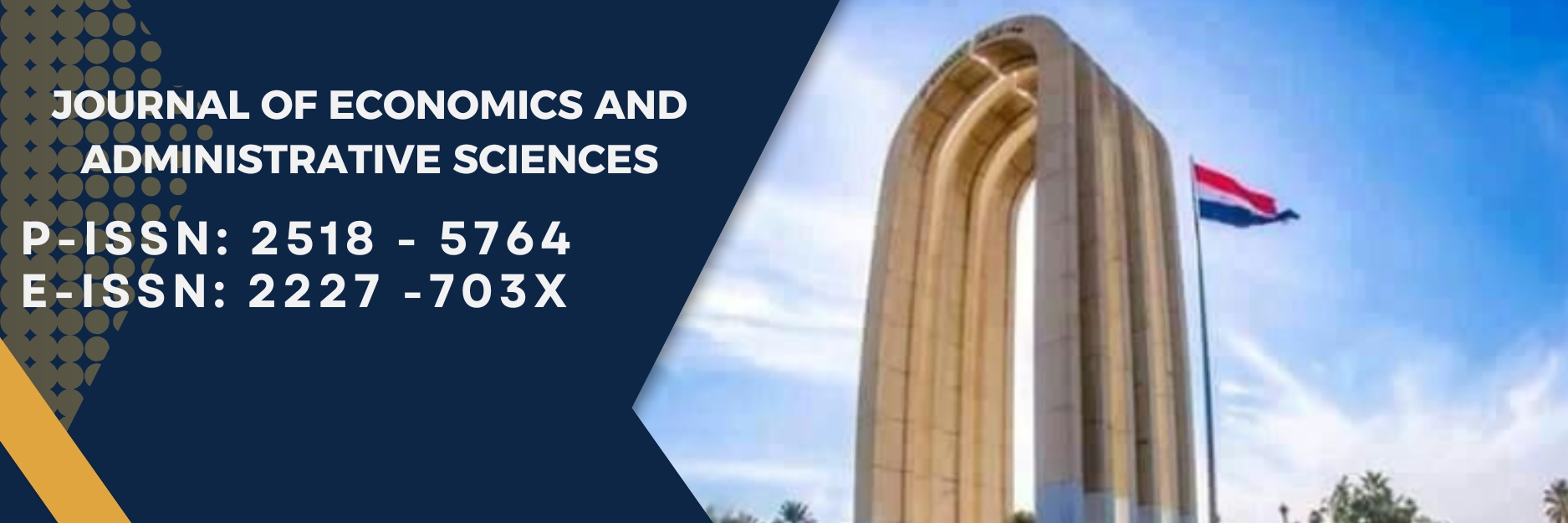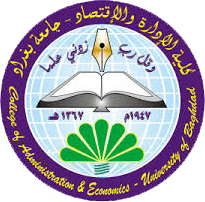Analyzing the impact of exchange rate fluctuations and inflation on the GDP in Iraq using the modern methodology of Cointegration for the period (1988-2020)
DOI:
https://doi.org/10.33095/jeas.v28i131.2235Keywords:
official exchange rate , parallel exchange rate , gross domestic product , inflation , ARDL modelAbstract
The research aims to analyze the impact of exchange rate fluctuations (EXM and EXN) and inflation (INF) on the gross domestic product (GDP) in Iraq for the period 1988-2020. The research is important by analyzing the magnitude of the macroeconomic and especially GDP effects of these variables, as well as the economic effects of exchange rates on economic activity. The results of the standard analysis using the ARDL model showed a long-term equilibrium relationship, according to the Bound Test methodology, from explanatory (independent) variables to the internal (dependent) variable, while the value of the error correction vector factor was negative and moral at a level less than (1%). The relationship between EXM and GDP was inverse, with partial flexibility for EXM (-7.666), meaning that an increase in EXM (1%) will lead to a decrease in GDP (7.666%). This applies to the reality of the Iraqi economy, as the method used in recent times is to devalue the local currency. The effect of EXN was steady in the long run, with the partial flexibility of EXN (5.785), that is, an increase of EXN (1%) will lead to an increase in GDP (5.785%), and the model as a whole is statistically significant. The explanatory power of the model is high, as it was (R2=0.816), indicating that 81% of the changes in GDP in constant prices are due to the change in (EXM, EXN, and INF). The study concluded that in light of the outbreak of the coronavirus, the disruption of most economic projects, and the decline in the prices of the Iraqi government, as a result of the decrease in the balance of oil and oil revenues, as a result of the balance of the government part of the solution is to devalue the local currency by controlling the nominal exchange rate. At present, the Iraqi Monetary Authority recommends that the Managed Flexible Exchange System be continued as an effective means of avoiding external shocks for the Iraqi economy, as it allows for appropriate adjustments to be made continuously
Downloads
Published
Issue
Section
License

This work is licensed under a Creative Commons Attribution-NonCommercial-NoDerivatives 4.0 International License.
Articles submitted to the journal should not have been published before in their current or substantially similar form or be under consideration for publication with another journal. Please see JEAS originality guidelines for details. Use this in conjunction with the points below about references, before submission i.e. always attribute clearly using either indented text or quote marks as well as making use of the preferred Harvard style of formatting. Authors submitting articles for publication warrant that the work is not an infringement of any existing copyright and will indemnify the publisher against any breach of such warranty. For ease of dissemination and to ensure proper policing of use, papers and contributions become the legal copyright of the publisher unless otherwise agreed.
The editor may make use of Turtitin software for checking the originality of submissions received.


























